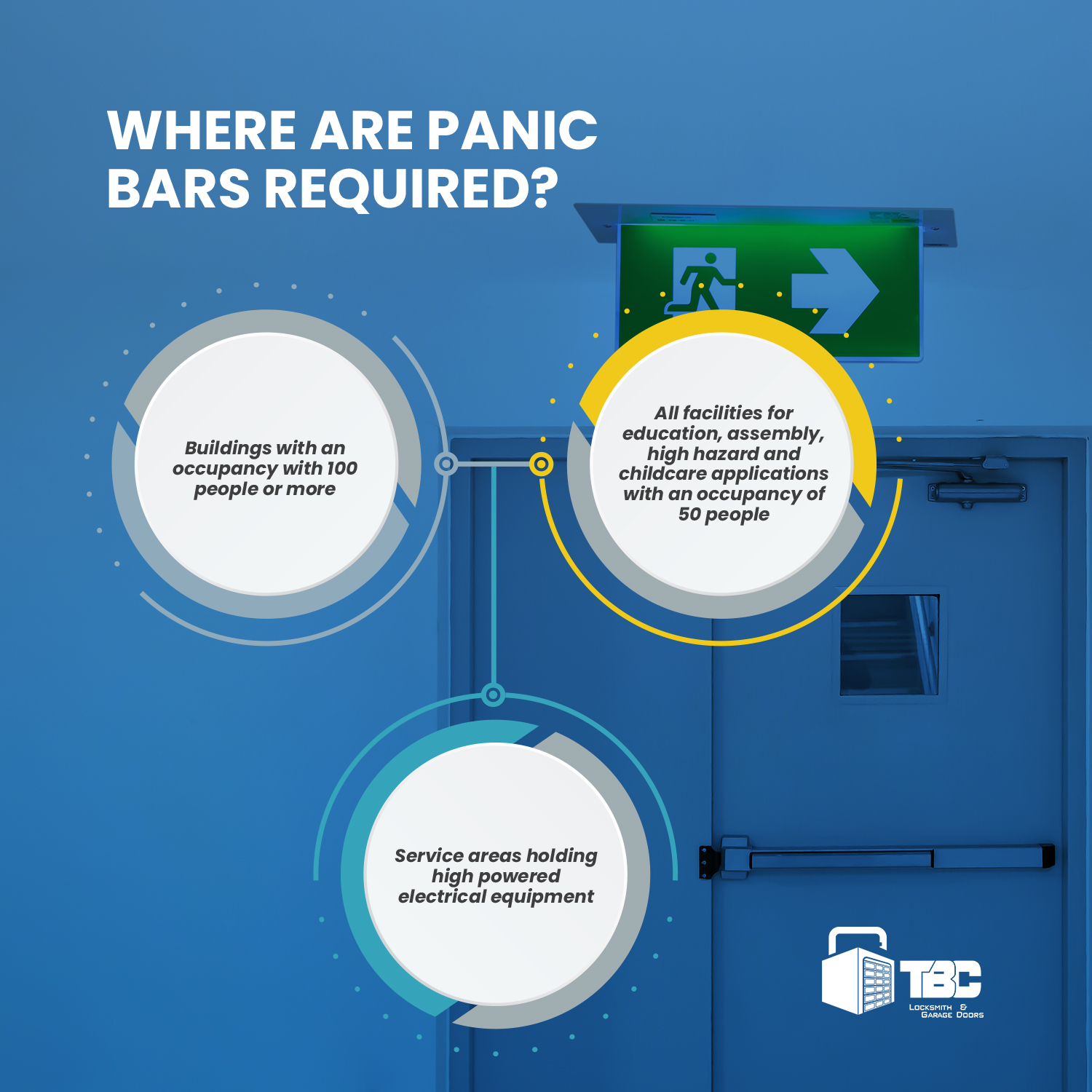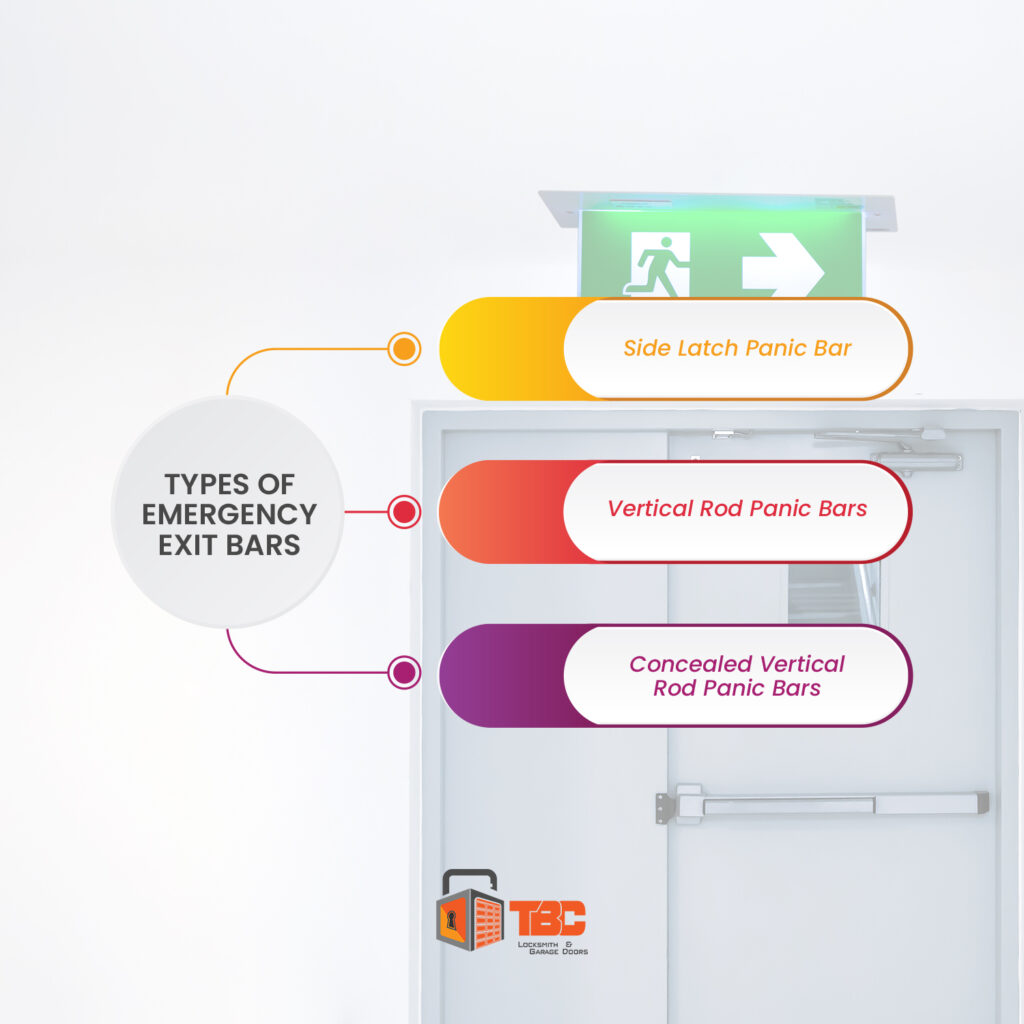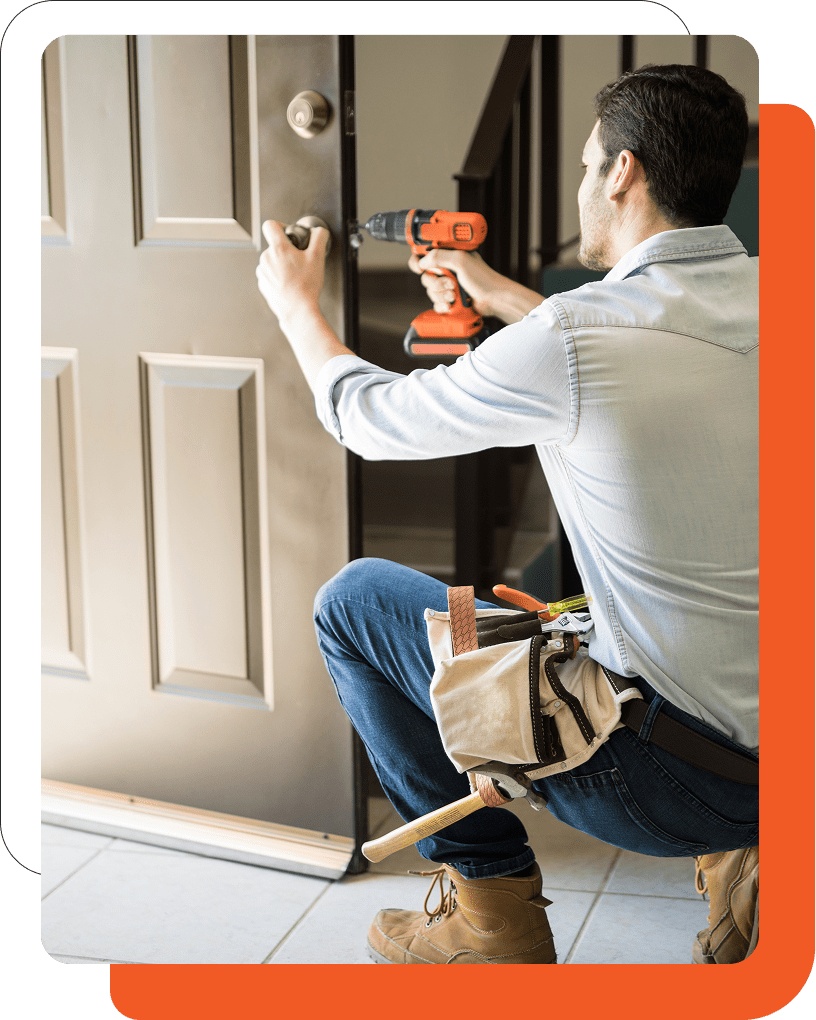
A panic bar has become a relatively popular safety mechanism to prevent loss of lives that can stem from people being trapped in a building or an area. If you are wondering what a panic bar is, keep reading to find out.
What is a Panic Bar?
A panic bar, also known as a push bar or a crash bar, is a mechanism found on doors. It is a horizontal bar that allows users to open the door against it. Panic bars were originally designed to prevent stampedes during an emergency. However, today panic bars have become one of the most common port opening mechanisms found in many commercial buildings.
The main purpose of a panic bar is to allow occupants of a building to get out as soon as the bar is pushed. It also makes it easier to access the room because by pressing against anywhere on the crash bar, you can cause the door to swing open.
How Does a Panic Bar Work?
Panic bars are placed strategically on doors around buildings that experience large crowds such as arenas and hospitals by a locksmith Toronto.
They have a spring-loaded metal bar that is installed horizontally on the inside of a door. Immediately the panic bar is pushed or activated, the door unlocks. This unlocking facilitates quick, easy access from inside due to the door opening outside, not outwards.
Panic bars have a lever and a locking mechanism. The instant you push the door, the door opens due to the lever lifting. Panic bars are typically installed on only exit doors, keeping the people inside safe.
What is the History of Panic Bars?
Sadly, the history of panic doors is rather sad. In the year 1883, tragedy struck in Sutherland, a quiet town in England. There was an accidental fire outbreak in a local building, resulting in the death of 183 children who were trapped in the building. The only escape out of the building was at the bottom of a stairwell, and when they attempted to push the door open, they found it bolted shut, trapping them.
A couple of years later, across a pond in Chicago, a similar tragedy ensued. More than 600 people were gathered at the Iroquois Theater and subsequently trapped when the building caught fire. Every person in the building died from the fire or being trampled on by panicking people. If the theatre’s iron doors aren’t locked from the outside, maybe some of the occupants might have been able to make it out alive.
Having a door locked from the outside was quite common back in the day. A locked door was to keep non-paying patrons out and paying patrons in. Unfortunately, this led to the loss of lives at the Iroquois Theater.
A couple of years later, 174 children died in the Cottonwood School fire due to the exits being blocked by broken doors. This series of misfortunes led to the invention of a panic bar, a creation designed to prevent the unnecessary loss of lives.
Can You Lock a Panic Bar?
Yes, you can lock a panic bar. Panic bars are horizontally placed against the inside of a door that opens outward. When the door is pushed, the flat bar retracts a latch mechanism, causing the door to unlock quickly for a quick exit. Many panic doors are also fitted with keys that help hold the panic bar open for shorter exit times.
You should press and hold the push bar in to cause an exterior door to unlock. Next, insert the key into the keyhole usually found at the left of the bar. Turn the key until you hear a click, and once you release the bar, it should remain pushed in. to lock your panic door, put the key in the dole and twist towards the opposite direction.
Where Are Panic Bars Required?
Panic bars are a necessity in facilities intended for educational, assembly or high hazard activities. Commercial, residential, and retail buildings do not make panic bars mandatory unless they exceed or even meet certain assembly occupancy load standards. Due to these standards, apartment buildings, offices and stores do not require panic hardware.
Panic hardware can be combined with pairs of doors or single doors by a locksmith Toronto. They are usually used in conjunction with delayed egress, free egress, controlled egress or controlled access doors. You can install panic hardware on fire doors where panic doors are necessary if the hardware is also certified for safety in fire conditions.
Where Are Panic Bars Required?

In line with fire and building safety codes, certain facilities would require panic bar installation and other hardware to make movement easier and faster.
- Buildings with an occupancy with 100 people or more
- All facilities for education, assembly, high hazard and childcare applications with an occupancy of 50 people
- Service areas holding high powered electrical equipment
Excluding a few exceptions, when a door is a means of exit from any of these types of buildings with the area exceeding the mandated occupant load, you can fit the door with a latch or a lock if it has a panic bar.
What Types of Emergency Exit Bars Are Available?

You must have noticed the traditional horizontal panic bars in almost every institution you visit. They are the most popular choice for most business owners. However, other types of panic bars are available, including side panic bar lever, vertical rod panic bars and concealed vertical rod panic bars.
Side Latch Panic Bar
This is similar to a horizontal crash bar. The only noticeable difference is in the locking mechanism, which consists of a heavy-duty side latch that locks into the strike plate held within the door frame. This type of panic bar is not equipped with vertical locking rods.
Vertical Rod Panic Bars
Vertical rod panic bars are very similar to horizontal panic bars. However, they feature unlocking and locking mechanisms at the bottom and top of the door. These mechanisms are activated when the hardware is pressed as opposed to the regular horizontal lock.
Concealed Vertical Rod Panic Bars
The concealed vertical rod is best suited for aluminum doors, featuring special rods to accommodate the hollow body of the door frame. Due to the internally concealed hardware, there is a slim chance of unwanted intruders using your panic door as an entryway.
How Much Does it Cost to Install a Panic Bar?
To install a panic bar, you will expect to pay for the services of a professional locksmith. It can cost anywhere between $70 to $100. Replacing the lock cylinder on your panic bar costs between $40 to $60 for a conventional rim cylinder.
What is the Importance of Panic Bars?
Even though it is never fun to imagine an emergency, it is always best to be prepared for one. You should install push bars on both sides of your exit doors to protect you from intruders and allow you to escape in the event of dangerous situations or other emergencies.
Panic bars have various purposes. Even though safety is an essential function, panic bars serve the following purposes:
- You can use panic bars for easy exit and crowd control during emergencies and after events.
- Panic bars can help you get a decreased insurance premium on your facility when they are installed properly
- You can attach panic bars to exit doors for convenience and ease of use. Store owners particularly prefer them as they do not require any special maintenance as automatic doors do
Conclusion
If you are in Toronto or the GTA, contact TBC Locksmith for your top-notch smart lock solutions today. Our services include smart lock install and repair, rekeying keys, and making new keys.
We are available 24/7 to offer proper security solutions. At TBC Locksmith, we are fully equipped with a large inventory of high-quality locksmith tools and products to ensure we promptly respond to your needs.
All our locksmiths are insured and licensed, and we offer affordable pricing with a 90-day guarantee along with emergency services. Contact us today for all your locksmith needs.









